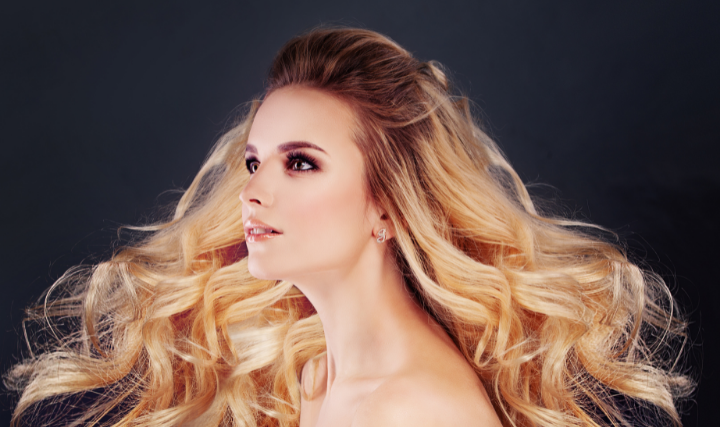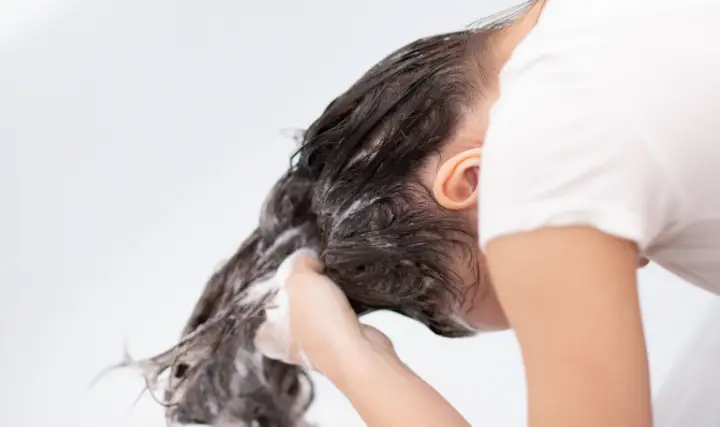Permanently wavy or even curly hair is the dream of many straight-haired people – perming makes it possible. But what does that mean for the hair, how does it work, and what do you have to watch out for?
In the 80s, it was the trend hairstyle par excellence; now it is back, but different: the perm. Invented as early as 1906 by Karl Ludwig Nessler, the fixed wave experienced its trendy peak between the seventies and nineties.
Stars like Sarah Jessica Parker, Madonna, Olivia Newton-John, and Julia Roberts presented huge curly hairstyles, freely following the motto: more is more!
Today, the perm looks different, more relaxed somehow.
There are still large amounts of curls, but the poodle is no longer the standard hairstyle. Instead, people now prefer to have casual beach waves or glamorous curls conjured up in smooth lengths.

How does the perm work?
A perm is a permanent wave, as far as that goes. But how exactly does it work? A perm is a chemical and permanent reshaping of the hair.
It works with straight, slightly wavy as well as already very curly hair. You can wave all your hair with it, not only straight but also curls.
An Afro, for example, can be turned into larger curls with large rollers. That happens through chemical reactions that take place in the hair.
The size of the curls is determined by the size of the curlers, and the curling technique decides the direction of fall.
Expert hairdressers also explain exactly how the wave is applied to the hair: “Once all the hair is wound up, the perming liquid, known as thioglycolic acid, is applied to the hair one winder at a time.
The liquid penetrates the hair, where it breaks the so-called disulfide bridges in the keratin, which are responsible for the hair’s shape and stability. “After twenty minutes of exposure, the liquid is rinsed out.
The rollers remain in the hair and are also not loosened.
Then each winder is dried individually, so the hair becomes absorbent again for the next course.” During this process, hydrogen peroxide is applied as a fixative – “the disulfide bridges close, and the hair is permanently wavy.”
How harmful is the treatment?
A perm is similar to bleaching a strain on the hair. Who already has broken hair should, therefore, rather leave the fingers of it. Anyway, it should be weighed: The chemical intervention can cause a lot of damage to the hair, making it brittle and dry.
Under certain circumstances, it can even break off.
Now, of course, the techniques and products have evolved since the eighties and are much gentler, but a perm is still not harmless.
How long does a perm last – and what to do when it grows out?

Perms last between two and five months; in the meantime, the hair continues to grow. If it’s naturally completely straight and has been turned into an extreme curl, it can quickly look unnatural.
Therefore, women with very straight hair should consider choosing light waves instead of extreme curls.
One option in between is also to lend a hand yourself, i.e., to temporarily transform the hair into curls with large rollers.
If the perm has grown out so far that it really bothers, the next appointment can take place in the hair salon.
Those who have had enough of the wave can also have it undone by means of straightening by a professional. But even that is no walk in the park for the hair.
How to care for the chemically curled hair?
The most important rule of care for perms is this: Leave them alone in the beginning. I will say: that washing is taboo at least the first three days.
After that, the wave can be washed as usual, but it is advisable to do it only every three days. In between, you can help yourself with dry shampoo.
To moisturize the stressed hair while washing, you should use a conditioner and match the products to the stressed hair.
In general, perms do not need much styling by nature, but they do need a lot of moisture. Leave-in treatments are suitable here, for example.
Can I do the perm myself?
In principle, yes, but the expert points out that trying to do it yourself is “generally not recommended.
There are special perming kits for home use, but you can “do a lot wrong!” There is a risk not only of broken hair and faded color but also “so-called kink tips, where then only the scissors can help.”
Who does not want to opt for the permanent wave but has various ways to make his curls themselves? Then only temporarily, but certainly more gentle.
Conclusion
It can be very frustrating to pay a lot of money for a perm and have our hair turn out differently than we want it to.
If you have your hair permed at home or had a professional perm and it is curlier than what you imagined, there is a way to relax and soften the curl so you can get the look you want without spending a lot of money.

Instructions: How Do You Relax A Perm That Is Too Curly
- Wash your hair under the tap with shampoo. Work from root to tip with your fingers to smooth the hair.
- Shampoo rinse out thoroughly with lukewarm water.
- Work conditioner through hair from root to tip. Allow the conditioner to set on the hair for a time specified by the instructions (average 3-5 minutes).
- Rinse the conditioner thoroughly with cold water.
- Towel dry hair lightly. Hair should be damp.
- Apply the deep conditioning treatment. Comb hair thoroughly with a wide tooth comb.
- Set hooded hair dryer and set it to low heat. Set a timer on the dryer for 20 minutes unless otherwise specified for the deep conditioning treatment package.
- Place all hair under the shower cap and rest under the dryer for the allotted time.
- Rinse conditioner from hair and towel dry.
- Add leave-in conditioner and then style as usual or let air dry.
Tips & Warnings
For best results, condition hair as soon as possible after hair has been permed.
You can also achieve maximum results by using products from the same beauty line.
Never chemically alter the hair yourself. If the perm is still not to your liking, return to the hairdresser and ask for professional help in correcting the perm.